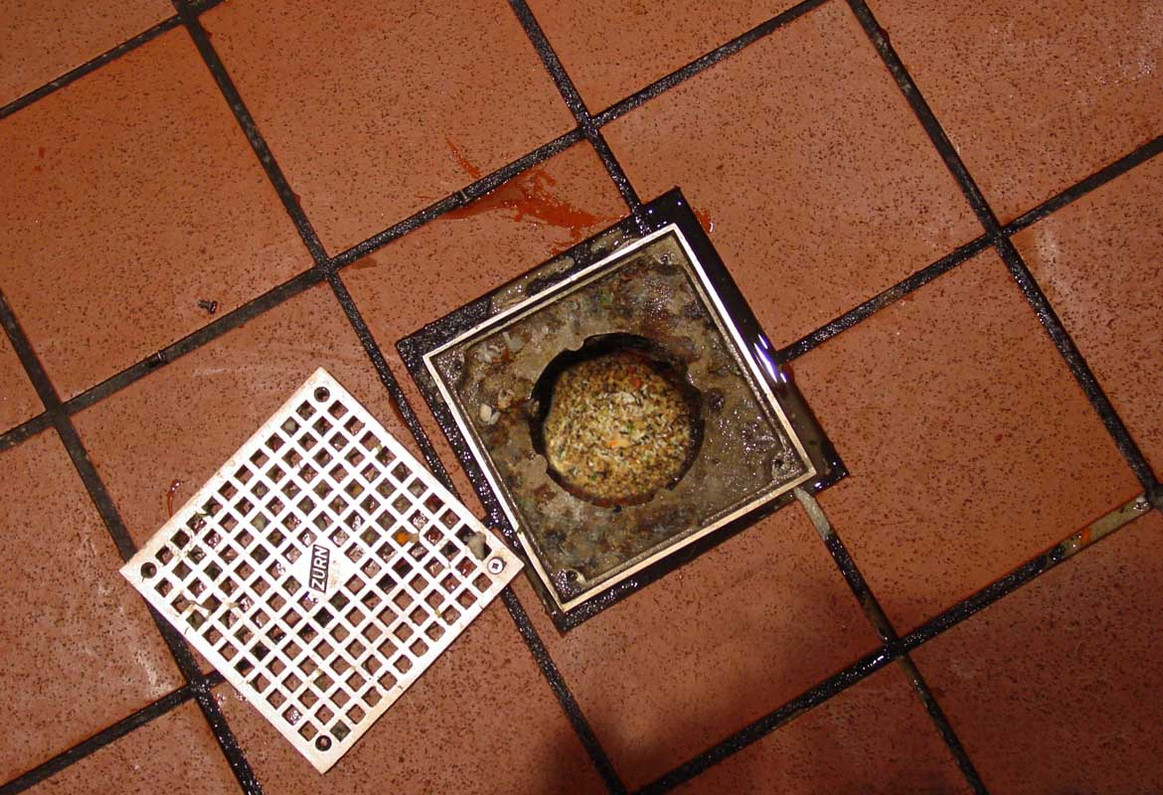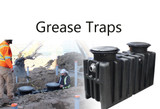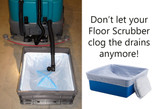How to prevent restaurant drain line emergencies
Imagine this: It’s a busy Saturday night at your restaurant, the tables are full of happy customers, the kitchen is humming, and the staff is hustling. And just as your guests start to arrive for their 7:00 reservations, a kitchen team member runs up to you and gives you the bad news, “a kitchen floor drain is backed up and flooding the floor”. The thoughts running through your head will likely be: What should I do? Can I get a plumber out on a Saturday night? Could this have been prevented?
Whether you are an operator, business owner, or facility manager, you have plenty of things to worry about when it comes to your restaurant. Keeping the business running smoothly has only gotten harder with challenges such as COVID and labor shortages. Important systems such as plumbing can be put on the back burner if they aren’t currently causing you problems. But as we all know, the drain system of any restaurant is strained more than most other facilities due to the large amount of grease and solids that come out of the kitchen. Neglecting the drains is putting your restaurant at risk for a plumbing disaster that could strike at any time.
Thankfully restaurateurs can take proactive steps to mitigate and prevent most unexpected drain line plumbing problems. Let’s take a quick walk around the restaurant and look at what solutions are available to “protect” each drain.
Compartment Sinks & Garbage Disposals
Cleaning dirty pots, pans, dishes and smallwares is no easy task. The job gets even harder when the sink starts to back up. The usual suspect for sink backups is food scraps and solids. Some restaurants use commercial garbage disposals to grind up the solids, but this “solution” can often cause just as many problems. Garbage disposals are prone to leaking, breaking down, and wearing out. They pose a serious risk of injury to staff, not to mention all the silverware they will eat up. Additionally, many municipalities are banning garbage disposals because of the large amounts of food solids they permit into the sewer system.
 Commercial kitchens can now utilize under-sink flat strainers or wet waste interceptors. These garbage disposal replacements house a sliding strainer drawer or basket that catches all the food solids that get washed down the sink. When the strainer fills up, the drawer or basket can be pulled out and dumped into the trash or compost bin. Advantages of these units include: no moving parts to break down, no dangerous blades, and if an item does inadvertently go down the sink drain, they can easily be retrieved. Under-sink flat strainers units are a more sustainable solution to handling solid food waste because they require no electricity or running water to operate. They may also help restaurants comply with new organic waste regulations. Separating out food solids could also save your restaurant money by reducing the frequency of grease trap cleanings.
Commercial kitchens can now utilize under-sink flat strainers or wet waste interceptors. These garbage disposal replacements house a sliding strainer drawer or basket that catches all the food solids that get washed down the sink. When the strainer fills up, the drawer or basket can be pulled out and dumped into the trash or compost bin. Advantages of these units include: no moving parts to break down, no dangerous blades, and if an item does inadvertently go down the sink drain, they can easily be retrieved. Under-sink flat strainers units are a more sustainable solution to handling solid food waste because they require no electricity or running water to operate. They may also help restaurants comply with new organic waste regulations. Separating out food solids could also save your restaurant money by reducing the frequency of grease trap cleanings.
Sink drains that don’t have garbage disposal or under-sink flat strainers can now be locked down with a sink drain lock. These simple devices prevent staff from using the sink drain as an easy way to dispose of, well anything. Sink drain locks also prevent damage to the twist, slide, or lever waste drain.
Floor Sinks and Mop Sinks
Floor Sinks allow for indirect draining in the restaurant. Post-construction floor sinks are typically outfitted with a dome strainer or a heavy cast iron bucket, neither of which allows for easy servicing of the floor sink. Often the floor sink ends up being used as a giant trash can, leaving the plumbing system vulnerable to clogs and backups. Protecting your floor sink has never been easier now, with many innovative drain locking solutions now on the market. On top of the drain lock you’ll want to replace any cast iron bucket with a lightweight plastic or stainless steel strainer basket, which will be easier for the staff to service. Similarly, mop sinks can be outfitted with drain locks and large mop sink basin strainers which can prevent mop water solids and trash from going down the drain. Outfitting a kitchen with drain locks and baskets typically pays for itself if they prevent even one emergency call to a plumber or drain jetter.
Another plumbing-adjacent tip for you… if the floor sink is chipped, dirty or rusty, you don’t necessarily need to spend thousands to dig out and replace it. You can give your floor sink a “facelift” using either a retrofit floor sink liner or a floor sink flange adapter. These liners can adhere to the floor sink, giving them a fresh look, while also holding a basket and grate to protect the drain line.
Floor Drains
Floor drains in both the front and the back of house are susceptible to drain clogs if enough solids or grease are permitted to accumulate. Preventative measures may vary depending on the location of the drain. Drains subject to large amounts of solids can be outfitted with drain socks or drain cones which simply drop into the drain, and remain hidden under the drain cover. Grease buildup in the drain lines can be mitigated with slow-releasing compounds that contain “good” bacteria that can actually eat away the F.O.G. to keep the pipes and drains clean. Regular cleaning of floor drains with a drain foaming agent and drain brush can also he reduce drain odors and insect breeding grounds. When maintaining drains, please avoid using harsh drain chemicals which can damage and corrode pipes. Harsh drain cleaning chemicals can contain toxic ingredients which make their way into the sewage system and out to rivers, wildlife, and the water supply.
Toilet Drains
Until now there haven’t been a lot of solutions to a clogged toilet, other than a plunger and a plumber. Now restaurants can use toilet drain guards, which utilize tiny laser-cut hooks to actually catch and prevent non-flushables from being flushed down the toilet drain. These devices combined with appropriate signage can allow restaurants to retire their “bathroom out of order” sign once and for all.
Beverage Drain Lines
Soda fountain and beer tap drain lines are often overlooked when it comes to drain line maintenance. They are prone to clogging because bacteria, mold, and yeast grow inside the lines. Bacteria in the drain lines feed off a constant source of sugar from soda overflow causing what many people call “sugar snakes”. Over time this hinders the flow of water and other liquids, causing a major drain line backup. These backups can be prevented with slow-release bacteria based compounds which target the sugars and yeast. Other available products include specialized beverage drain line brushes and automatic soda gun jetters. Never pour bleach or drain cleaning chemicals down beverage drain lines.
Proactive vs Reactive
As the old saying goes, ‘a stitch in time saves nine’. Being proactive about drain line and plumbing issues in your restaurant may require a little time and money up front, but the preventive measures will typically save you from unexpected and expensive plumbing emergencies and repairs. There’s never a good time for a drain line backup, but today is always a good day to prevent one.
This article was first published in the Facilitator. Read the magazine here.
Recent Posts
-
What does Grease Trap do?
Grease traps, also known as grease interceptors, are plumbing devices designed to capture and separa …4th Jun 2024 -
Where to dump a Floor Scrubber?
An important aspect of operating a floor scrubber is the proper dumping of the cleaning solutio …2nd May 2024 -
Why Roof Drains Matter for Commercial Roofs
Why Drainage Matters for Commercial Flat Roofs In the case of flat or slightly pitched roofs, t …20th Sep 2023





